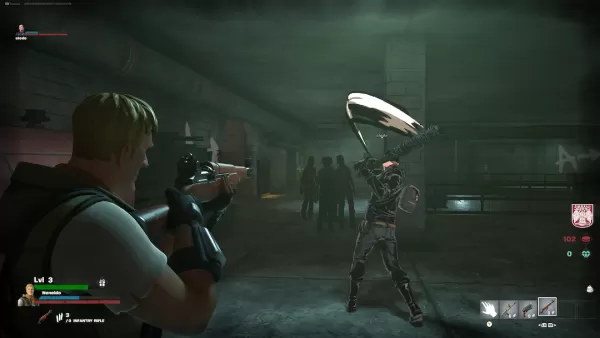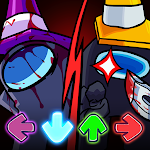The games industry has faced significant challenges in recent years, with layoffs, studio closures, and dwindling funding creating a turbulent landscape for developers. Enrique Fuentes, CEO and co-founder of Teravision Games, knows this struggle all too well. His team’s release of *Killer Klowns From Outer Space*, an asymmetrical horror game based on the cult 80s film, was met with positive reception—earning a 7 from IGN and drawing hundreds of thousands of views across its trailers. Yet despite the game's success, the team found itself in a precarious position post-launch, a situation many studios have experienced firsthand.
“As you know, 2024 was a pretty tough year for the whole industry. So it was a little bit slow for us to close our next project,”
Fuentes explained. Despite prior collaborations with major companies like Disney, Nickelodeon, and Xbox, Teravision struggled to secure a follow-up project after *Killer Klowns*. With time running out, the veteran team—many with over two decades of experience—turned to something unconventional: developing within *Fortnite* using Unreal Engine for Fortnite (UEFN). In under a year, the studio launched three UEFN titles. Today marks the release of their fourth, developed in collaboration with Skybound Entertainment—the company co-founded by *The Walking Dead* creator Robert Kirkman.
Introducing Courtyard King

Teravision’s latest title, *Courtyard King*, is a King of the Hill-style multiplayer PvPvE game set in *The Walking Dead* universe. Built using official assets released for UEFN—including character models of Rick Grimes, Negan, and Daryl Dixon—the game lets players battle both enemy factions and hordes of zombies for control of territory in the iconic prison setting. But beyond just visuals, Teravision worked closely with Skybound writers to craft original storylines and dialogue, giving the game authentic narrative depth.
“Instead of a multi-year project like Killer Clowns From Outer Space, these are projects that we could put together in weeks or months.”
Unlike traditional development cycles, which can span years, UEFN allows studios to build and launch games rapidly. For Fuentes, this flexibility came at the perfect time:
“We have worked with big brands in the past… and UEFN was something that we were experimenting with… but we never imagined that was going to be the root where we’re going to be engaging with a company like Skybound,”
he said. “But I mean, UGC is one of the biggest things in gaming right now.”
Why UEFN Is Changing the Game
User-generated content (UGC) has long been a staple on platforms like Roblox, where players create their own experiences. However, professional studios producing high-quality UGC for platforms like *Fortnite* is a relatively new trend—and one that suits experienced developers perfectly. Thanks to its background in Unreal Engine development, Teravision was able to adapt quickly to UEFN, a modified version of Unreal Engine 5 tailored for *Fortnite* creation.
“It made sense because we come from an engineering background and it was a platform where we could experiment in and assume some of the risk,”
Fuentes added. “Because instead of a multi-year project like *Killer Clowns From Outer Space*, these are projects that we could put together in weeks or months.”
Their first experiment was *Havoc Hotel*, a roguelike shooter set in a procedurally generated hotel building. Each cleared floor earned players currency to upgrade weapons, encouraging repeat playthroughs. The game performed well enough to justify sequels, culminating in *Havoc Hotel 3*, now one of *Fortnite’s* most-played UEFN titles.

Game Designing in a New Sandbox
While the transition to UEFN was smooth from a technical standpoint, the design process presented a unique challenge. According to Martin Rodriguez, Teravision’s game designer, the streamlined tools allowed the team to focus more on creativity than infrastructure:
“For us, it just removes some of the work that we would’ve done otherwise and allows us to focus on just making better games and explore different new creative ideas.”
Creative director LD Zambrano noted that designing for UEFN required a shift in thinking. Unlike traditional games, which rely heavily on structured objectives and clear win conditions, UEFN titles often thrive on emergent gameplay and player-driven interactions.
“A traditional experience we have had designing other [non-UEFN] games is where players relate through objectives that entice cooperation and competition, right?”
Zambrano explained. “In [UEFN’s] case, we have found that even though those objectives are still relevant and we still can use that game design sensibility and bring them there, I found that there are a lot of experiences that are very popular within the Fortnite ecosystem that are kind of just context. They’re weird situations and interactions that don’t necessarily translate into a very clear competition, but they still work.”
He likened the experience to playing during recess:
“I have found that there is this way of approaching each other that brings me back to recess, which is you meet somebody and make up some sort of game that might not make sense, but still you’re engaging and creating friendships. That’s what I mean about some of these games becoming a ‘context.’”
An Infinite Game Experience
One standout feature of *Courtyard King* is that it’s designed as an infinite game—there’s no final winner. Matches continue indefinitely, allowing players to drop in and out at any time, even switching teams mid-match. This mechanic opens the door for unpredictable moments, such as betrayal plays when one member of a party secretly switches sides.
“Players can drop in and drop out whenever they want. They can even change teams whenever they like, which generates situations for betrayals. Maybe you enter a party with your friend, but then in the middle of the match you don’t tell him and change teams. Which is very Walking Dead-like.”
A Sustainable Future for Game Studios?
While working within another company’s platform may seem restrictive, Fuentes sees it as a lifeline for studios navigating today’s uncertain market:
“This is now a viable model where you can actually support an 80-person studio like we do, and we can assume the risk.”
For indie developers and small-to-mid-sized studios, UEFN offers access to massive audiences, powerful tools, and established IP assets without the need for multi-million-dollar budgets or years of development. It’s a space where creativity meets speed, and where innovation can thrive even amid industry downturns.
“We can actually assume the risk as an indie developer in [UEFN]. Because last year, we couldn’t even think about starting a three-year project. We could do something in a few weeks with a smaller team and that completely changes the paradigm for a new developer.”
Fuentes concluded with optimism:
“It’s something that if you have the right ideas, the right creativity around it, if you understand the market well enough and you have the right thinking, execution becomes possible and it doesn’t take years, it actually takes weeks, maybe months. I think this is a dream come true for indie developers.”
















